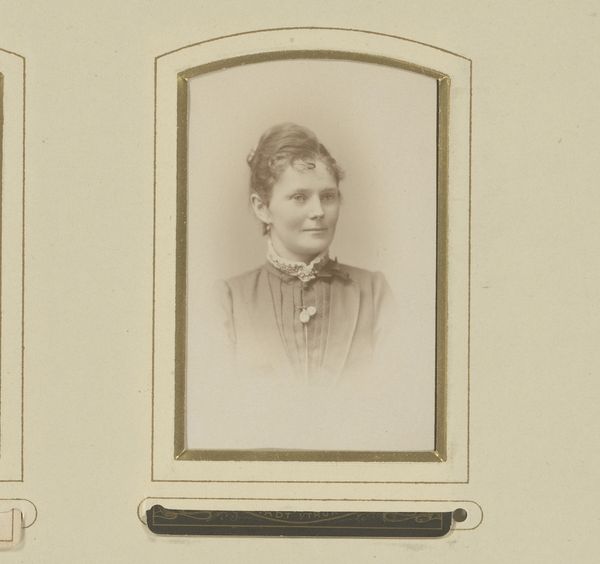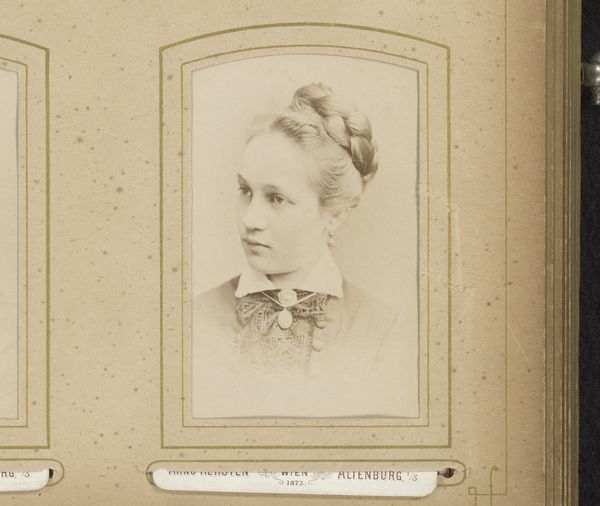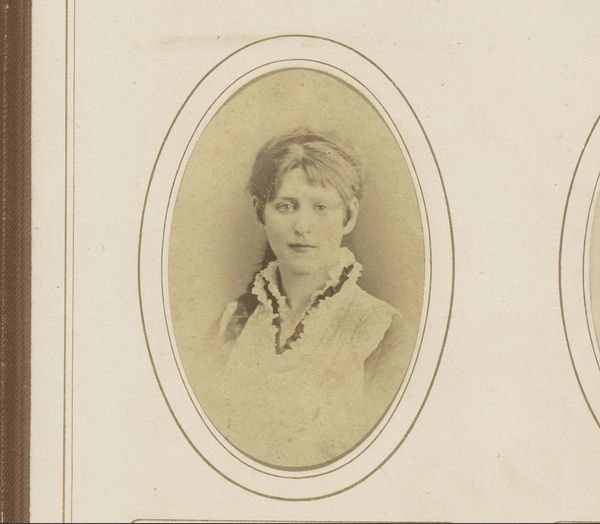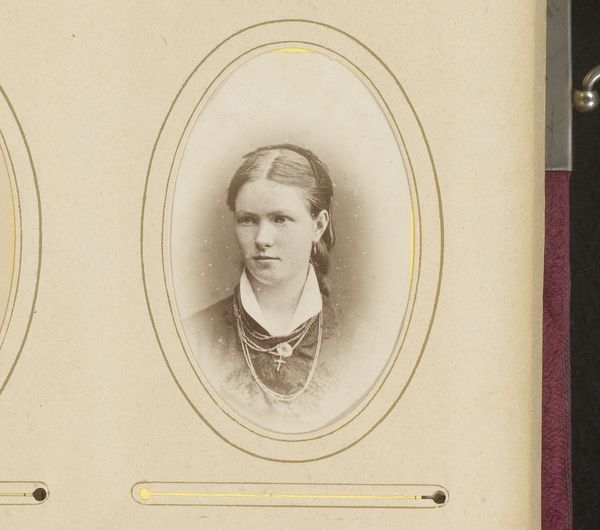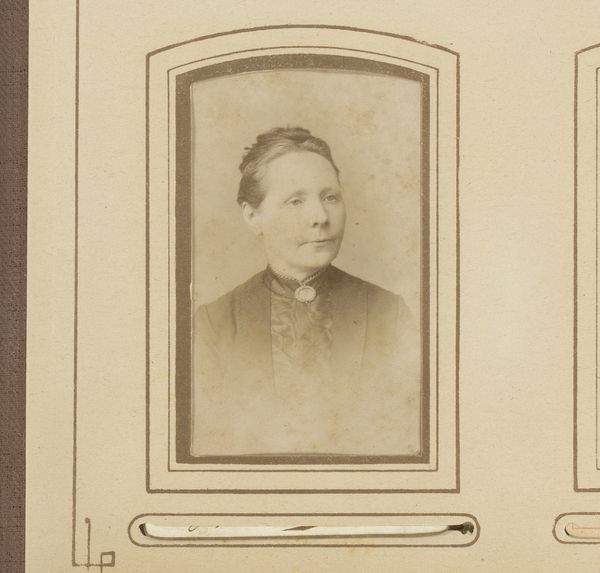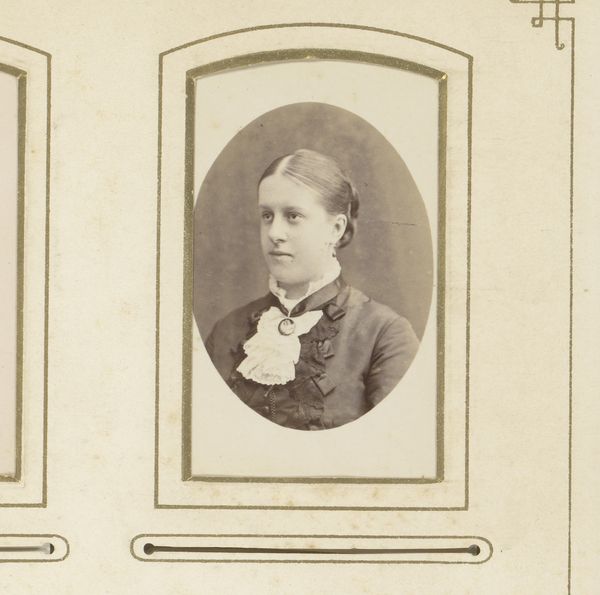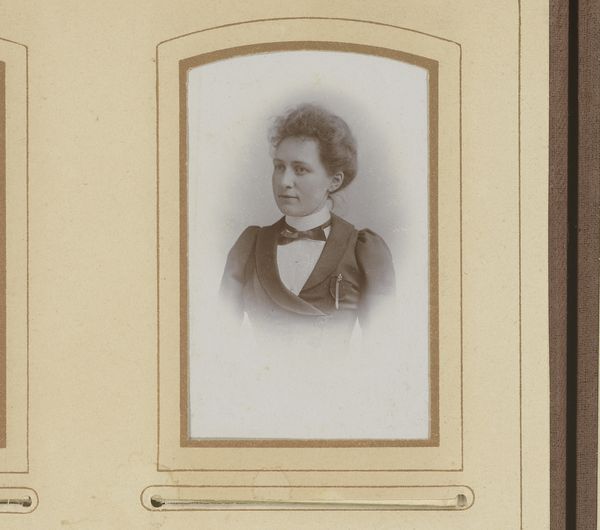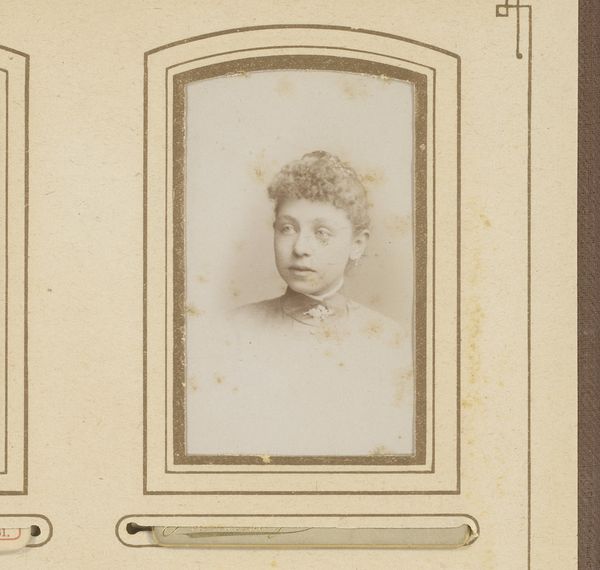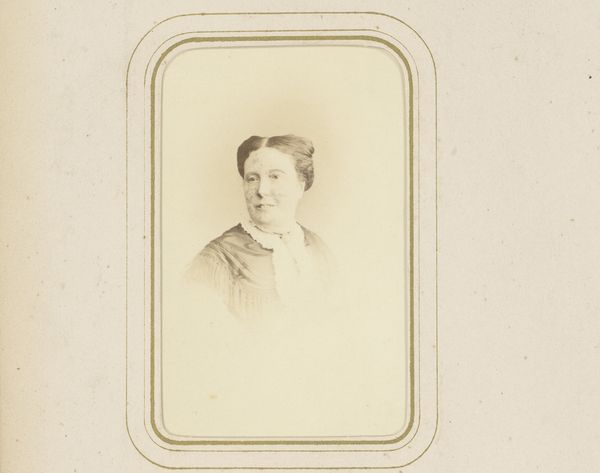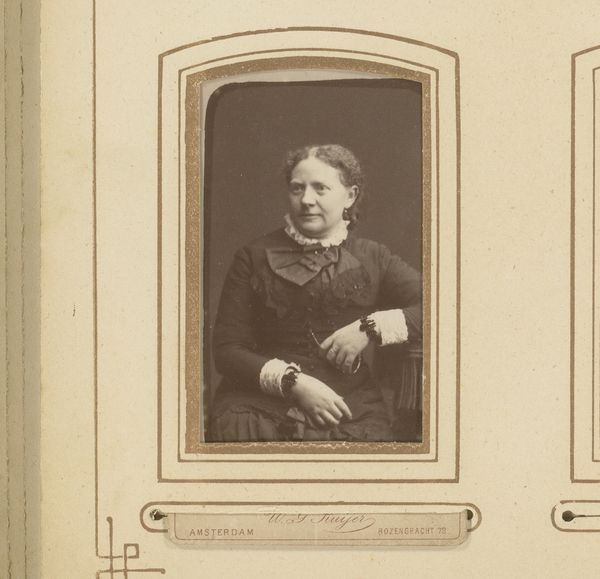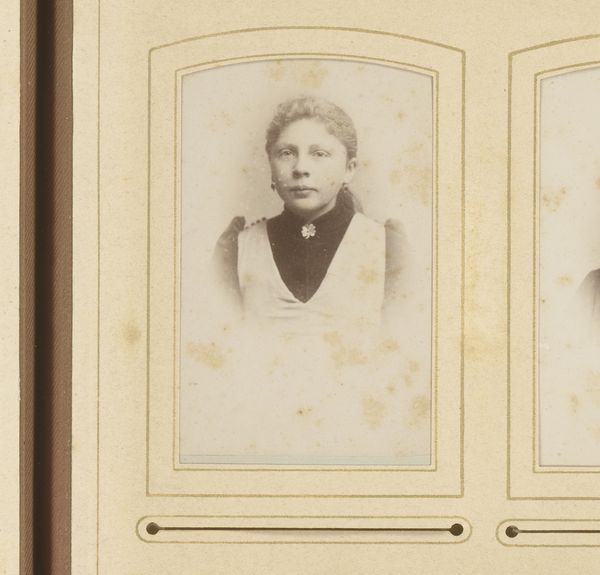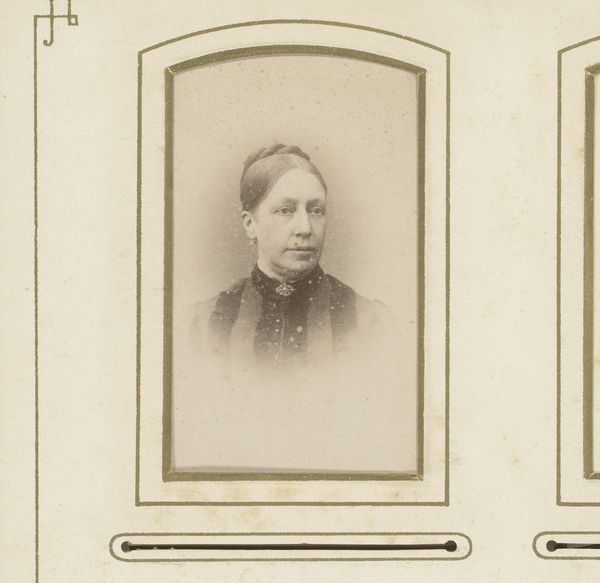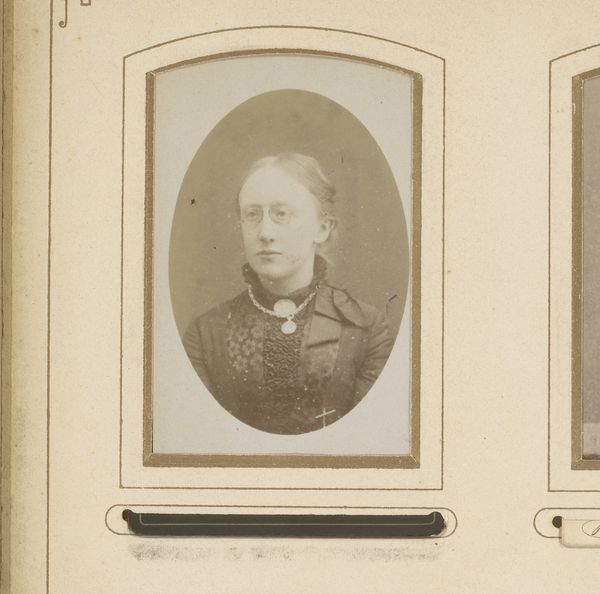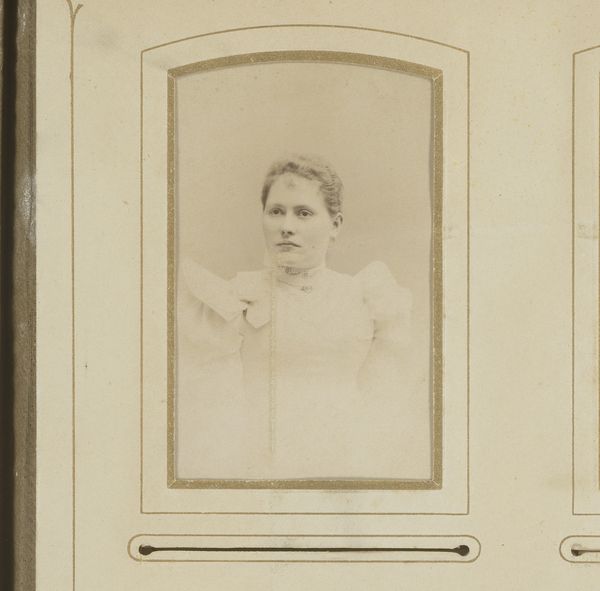
#
aged paper
#
toned paper
#
earth tone
#
charcoal drawing
#
charcoal art
#
brown and beige
#
19th century
#
warm-toned
#
golden font
#
watercolor
Dimensions: height 104 mm, width 64 mm
Copyright: Rijks Museum: Open Domain
This is a photographic portrait of a young woman, made by Abraham Koorenhoff. Photographs like these were a product of their time, made possible by innovations in chemistry and optics, but also driven by a newly prosperous middle class eager to capture their likenesses. The faintly sepia tone is typical of early photographic prints. The mode of production is key here; photography transformed portraiture, once the domain of skilled painters, into something more widely accessible. While a painter might spend days or weeks on a single commission, a photographer could produce multiple images in a relatively short time. This shift democratized representation, but also altered the meaning of an image. Consider the labor involved: from the production of photographic materials to the photographer's expertise in posing and lighting. By focusing on the material and social context of this image, we can appreciate its place within broader histories of art, technology, and society.
Comments
No comments
Be the first to comment and join the conversation on the ultimate creative platform.
